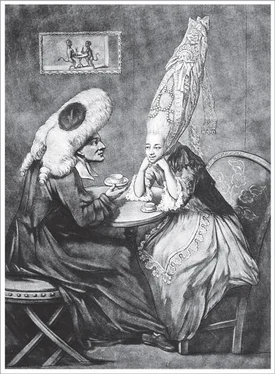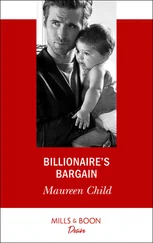Bill Bryson - At Home
Здесь есть возможность читать онлайн «Bill Bryson - At Home» весь текст электронной книги совершенно бесплатно (целиком полную версию без сокращений). В некоторых случаях можно слушать аудио, скачать через торрент в формате fb2 и присутствует краткое содержание. Жанр: Старинная литература, на английском языке. Описание произведения, (предисловие) а так же отзывы посетителей доступны на портале библиотеки ЛибКат.
- Название:At Home
- Автор:
- Жанр:
- Год:неизвестен
- ISBN:нет данных
- Рейтинг книги:4 / 5. Голосов: 1
-
Избранное:Добавить в избранное
- Отзывы:
-
Ваша оценка:
- 80
- 1
- 2
- 3
- 4
- 5
At Home: краткое содержание, описание и аннотация
Предлагаем к чтению аннотацию, описание, краткое содержание или предисловие (зависит от того, что написал сам автор книги «At Home»). Если вы не нашли необходимую информацию о книге — напишите в комментариях, мы постараемся отыскать её.
At Home — читать онлайн бесплатно полную книгу (весь текст) целиком
Ниже представлен текст книги, разбитый по страницам. Система сохранения места последней прочитанной страницы, позволяет с удобством читать онлайн бесплатно книгу «At Home», без необходимости каждый раз заново искать на чём Вы остановились. Поставьте закладку, и сможете в любой момент перейти на страницу, на которой закончили чтение.
Интервал:
Закладка:
Royal progresses were nearly always greeted with a mixture of excitement and dread by those on whom the monarch called. On the one hand they provided unrivaled opportunities for preferment and social advancement, but on the other they were stupefyingly expensive. The royal household numbered up to about 1,500 people, and a good many of these—150 or so in the case of Elizabeth I—traveled with the royal personage on her annual pilgrimages. Hosts not only had the towering expenditure of feeding, housing, and entertaining an army of spoiled and privileged people but also could expect to experience quite a lot of pilfering and property damage, as well as some less salubrious surprises. After the court of Charles II departed from Oxford in about 1660, one of those left behind remarked in an understandably appalled tone how the royal visitors had left “their excrements in every corner, in chimneys, studies, coal-houses, cellars.”
Since a successful royal visit could pay big dividends, most hosts labored inventively and painstakingly to please the royal guest. Owners learned to provide elaborate masques and pageants as a very minimum, but many built boating lakes, added wings, or reconstructed whole landscapes in the hope of eliciting a small cry of pleasure from the royal lips. Gifts were lavished freely. A hapless courtier named Sir John Puckering gave Elizabeth a diamond-festooned silk fan, several loose jewels, a gown of rare splendor, and a pair of exceptionally fine virginals, then watched at their first dinner as Her Majesty admired the silver cutlery and a salt cellar and, without a word, dropped them into the royal handbag.
Even her most long-standing ministers learned to be hypersensitive to the queen’s pleasures. When Elizabeth complained of the distance to his country house in Lincolnshire, Lord Burghley bought and extended another at Waltham Cross, in London’s Home Counties. Christopher Hatton, Elizabeth’s lord chancellor, built a mighty edifice called Holdenby House expressly for receiving the queen. In the event, she never came, and Hatton died £18,000 in debt—a crushing burden, equivalent to about £9 million today.
Sometimes the builders of these houses didn’t have a great deal of choice. James I ordered the loyal but inconsequential Sir Francis Fane to rebuild Apethorpe Hall in Northamptonshire on a colossal scale so that he and the Duke of Buckingham, his lover, would have some rooms of suitable grandeur to saunter through en route to the bedroom.
The worst imposition of all was to be instructed to take on some costly, long-standing obligation to the crown. Such was the fate of Bess of Hardwick’s husband, the sixth Lord Shrewsbury. For sixteen years he was required to act as jailer to Mary, Queen of Scots, which in effect meant maintaining the court of a small, fantastically disloyal state in his own home. We can only imagine his sinking heart as he saw a line of eighty horse-drawn wagons—enough to make a procession a third of a mile long—coming up his drive bearing the Scottish queen, fifty servants and secretaries, and all their possessions. In addition to housing and feeding this force of people, Shrewsbury had to maintain a private army to provide security. The costs and emotional strain ensured that his marriage to Bess was never a happy one—though it was probably never going to be a happy one anyway. Bess rather devoured men; Shrewsbury was her fourth husband, and her marriage to him was more of a business merger than a twining of hearts. Eventually, she accused him of conducting an affair with the Scottish queen—a dangerous charge whether or not a true one—and they separated. It was then that Bess began building one of the great houses of the age.
As life withdrew deeper and deeper into ever-larger houses, the hall lost its original purpose and became a mere entrance lobby with a staircase—a room to be received in and pass through on the way to more important spaces. Such was the case at Hardwick Hall (its name notwithstanding), where all the important rooms were upstairs. Never again would the hall be a room of any real significance. As early as 1663, the word was being used to describe any modest space, particularly an entrance or associated passageway. Perversely, at the same time its original sense was preserved and indeed extended to describe large, important spaces, particularly public ones: Carnegie Hall, Royal Albert Hall, town hall, study hall, and hall of fame, among many others.
Domestically, however, the hall became and remains the most semantically demoted room in the home. At the Old Rectory, as in most homes these days, it is a shrunken vestibule, a small utilitarian square with cupboards and hooks, where we take off boots and hang jackets—a clear preliminary to the house itself. Most of us unconsciously acknowledge this fact by inviting arriving guests into our houses twice: once at the door when they are brought in from outside, and then again, after they have been divested of coats and hats, into the house proper with a hearty, more emphatic double cry of “Come in! Come in!”
And on that note, we can drop our outerwear here and step into the room where the house truly begins.
* The low doors of so many old European houses, on which those of us who are absent-minded tend to crack our heads, are low not because people were shorter and required less headroom in former times, as is commonly supposed. People in the distant past were not in fact all that small. Doors were small for the same reason windows were small: they were expensive.
• CHAPTER IV •
THE KITCHEN
I
In the summer of 1662, Samuel Pepys, then a rising young figure in the British Navy Office, invited his boss, Naval Commissioner Peter Pett, to dinner at his home on Seething Lane, near the Tower of London. Pepys was twenty-nine years old and presumably hoped to impress his superior. Instead, to his horror and dismay, he discovered that when his plate of sturgeon was set before him it had within it “many little worms creeping.”
Finding one’s food in an advanced state of animation was not a commonplace event even in Pepys’s day—he was truly mortified—but being at least a little uncertain about the freshness and integrity of food was a fairly usual condition. If it wasn’t rapidly decomposing from inadequate preservation, there was every chance that it was colored or bulked out with some dangerous and unappealing substances.
Almost nothing, it seems, escaped the devious wiles of food adulterers. Sugar and other expensive ingredients were often stretched with gypsum, plaster of paris, sand, dust, and other forms of daft, as such additives were collectively known. Butter reportedly was bulked out with tallow and lard. A tea drinker, according to various authorities, might unwittingly take in anything from sawdust to powdered sheep’s dung. One closely inspected shipment, Judith Flanders reports in The Victorian House , proved to be only slightly more than half tea; the rest was made up of sand and dirt. Sulphuric acid was added to vinegar for extra sharpness, chalk to milk, turpentine to gin. Arsenite of copper was used to make vegetables greener or to make jellies glisten. Lead chromate gave bakery products a golden glow and brought radiance to mustard. Lead acetate was added to drinks as a sweetener, and red lead somehow made Gloucester cheese lovelier to behold, if not safer to eat.
There was hardly a foodstuff, it seems, that couldn’t be improved or made more economical to the retailer through a little deceptive manipulation. Even cherries, Tobias Smollett reported, could be made to glisten afresh by being gently rolled around in the vendor’s mouth before being put on display. How many unsuspecting ladies of quality, he wondered, had enjoyed a plate of luscious cherries that had been “rolled and moistened between the filthy and, perhaps, ulcerated chops of a St Giles’s huckster”?
Читать дальшеИнтервал:
Закладка:
Похожие книги на «At Home»
Представляем Вашему вниманию похожие книги на «At Home» списком для выбора. Мы отобрали схожую по названию и смыслу литературу в надежде предоставить читателям больше вариантов отыскать новые, интересные, ещё непрочитанные произведения.
Обсуждение, отзывы о книге «At Home» и просто собственные мнения читателей. Оставьте ваши комментарии, напишите, что Вы думаете о произведении, его смысле или главных героях. Укажите что конкретно понравилось, а что нет, и почему Вы так считаете.












